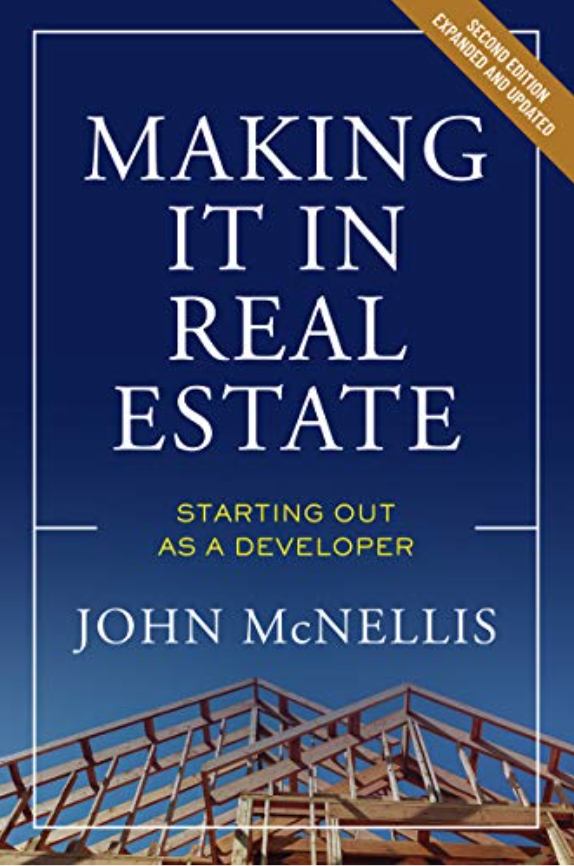Real Estate in the Plague Year
Without the elevator…there could be no downtown skyscrapers or residential high-rises, and city life as we know it would be impossible…the elevator’s role in American history has been no less profound or transformative than that of the automobile…“If we didn’t have elevators…we would have a megalopolis, one continuous city, stretching from Philadelphia to Boston, because everything would be five or six stories tall.” Boston Globe, 2 March 2014
When my mother was diagnosed with Alzheimer’s, I asked how long she might be expected to live. Rather elegiacally, the doctor said the end of life mirrors its beginning: As a toddler first speaks in full sentences around the age of three, losing that ability suggests one has about three years left; as a baby first walks at twelve months, the final loss of mobility implies about another year of life.
Examined through that sadly poetic lens, just as the elevator gave birth to the modern city, its loss will transform the city in ways the pundits will be debating for years to come. For make no mistake about it, we are going to lose—if not the elevator itself—then its marvelous efficiency. No longer will it whisk thousands of crowded passengers up sleek steel towers in a matter of minutes. Simply put, the elevator is ground zero for the COVID-19 virus, and its single biggest victim. Let’s agree that elevators are fabulous machines, as impactful on modern society as anything invented since. Let’s agree that, between the elevator companies and the high-rise building owners, we have very smart, highly capable and motivated people who will doubtless figure out a way to minimize the risk an elevator poses. For the sake of argument, let’s even agree that riding an empty elevator poses absolutely no risk, that there’s no hangover effect from its last rider (no scientist has gone that far). And let’s dispense with all the palliative measures for elevator safety we can think of by positing the ultimate one and then ask the only question that matters.
Simply put, the elevator is ground zero for the COVID-19 virus, and its single biggest victim
Let’s say that after each passenger trip, an elevator somehow runs through a veritable car wash of sanitizers, that it’s guaranteed 100 percent germ-free when you step on it. Let’s agree that you can’t get the virus from any of its surfaces. Let’s assume that your office is in the tallest building in San Francisco—the beautiful 61 story Salesforce Tower—where a ride to the top in one of its 34 elevators takes 40 seconds. Let’s even say that Salesforce restricts elevator ridership to, say, no more than four passengers at a time. Given all those safety precautions, would you be willing to ride in an oversized closet several times a day, year in and out, with three other passengers, knowing nothing can prevent a stranger’s fatal sneeze?
Even if 80 percent of you say, ”Sure, no worries, I’m good to go,” Salesforce and every other high-rise owner has a problem. An elevator that ferries a single passenger at a time (or four for that matter) is not an option in a high-rise.
To bring this home, I asked a good friend who works on one of Salesforce’s upper floors when he would feel comfortable returning to work. While not an alarmist, he sounded like one. “There’s no f***** way I’m going back there and riding one of those dinky elevators. I don’t care what they do.”
For his sake, let’s take it a step further and assume that the vaccine we’re all praying for turns out to be truly miraculous and that, rather than resemble flu shots, which range from 30 to 60 percent effective in any given flu season, the vaccine eradicates COVID-19 the way the smallpox vaccine eliminated smallpox. In that case, does everyone say olly olly oxen free and zoom skyward without a care?
The employees, visitors and day trippers might, but what about the owners of the businesses leasing space in high-rises? The guys who decide where to locate their offices, whether to sign 10 year leases? The guys calling those shots are smart, they know that bat soup is staying on the menu in Wuhan, that fraught animal-human contact will only worsen as the global population expands and that containment is a sad joke. Before they commit themselves to another decade in a high-rise, they might wonder when the next pandemic virus catches the red-eye to Los Angeles. If one major tenant in five ponders that eventuality too long, America’s central business districts are in for forty miles of bad road. (In 2019, Tropical Storm Imelda brought Houston its second 1,000-year flood in just two years. Do you think a few Texans moved their offices to higher ground?)
Yet offices aren’t going away. Companies, large and small, will always need offices. The question for office tenants will be: Where is that higher ground? That decision will be complicated by another factor. While the other real estate disciplines have been wrecked by the virus itself, the office market has suffered a body blow from the cure: the accidental discovery that many businesses are 90 percent efficient with their employees working from home. Add this discovery to the knowledge that the safe bet for the foreseeable future is the avoidance of small enclosed spaces—notably, elevators—and that the office market is now awash with millions of feet of sublease space. What do you have? A working recipe for serious vacancy.
The office landscape is about to be remade.



